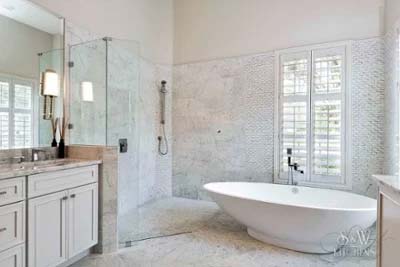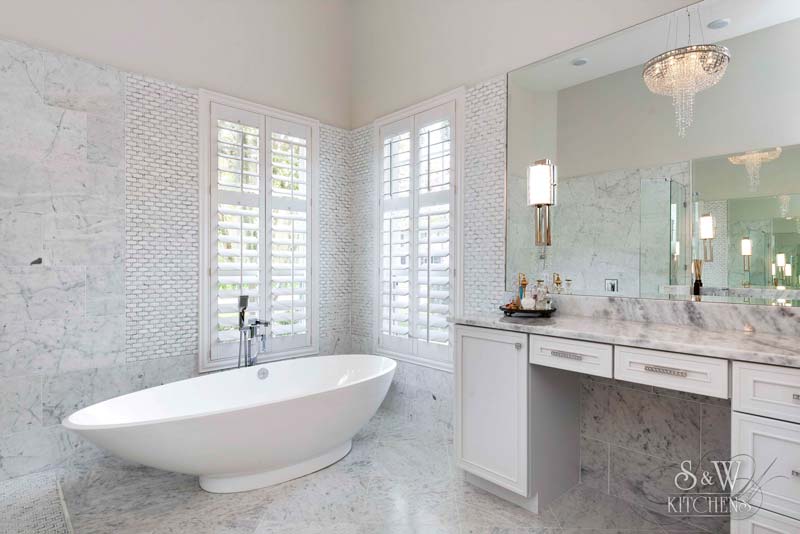Unlike a traditional dry bath, a wet bath is built to allow for every surface to get damp, from the sink and toilet to the shower. Although it takes some getting used to, many Asian and European bathrooms incorporate this design style, and it is quickly becoming more popular in the United States.

Ease of Access
One major benefit of a wet bath is how easy it is to use, and the extra amenities you don’t get with a traditional bath. A wet bath has been designed specifically for people who have difficulty getting into and out of a traditional bathtub or shower, but it’s also great for anyone who wants added convenience. You can install seating and support bars anywhere in the shower area – or even right in front of the toilet – to give you better stability while washing or dressing. Eliminating the edge on the basin makes it easier to step in and out of the shower. Accommodations can be made for reducing the size of the step into your bathtub as well.
Stress-free Cleaning
Glass shower screens are nearly impossible to keep clean, especially if you have kids or pets. Wet baths, on the other hand, are undemanding to wipe down and keep spotless. No more bending over a tub and trying to reach those hard-to-clean areas. With just a spray of the shower head or hose, you can rinse away any soap scum or residue effortlessly. Excellent ventilation makes it ideal for air to circulate within the shower area, keeping mildew, mold, and water decay at bay. This keeps your bathroom smelling fresh and looking tidy.

Add Value to Your Home
The wet bath is one of the most popular trends in bathroom design today, and for good reason: it’s sleek, modern, and spa-like. It will add a touch of luxury to your home. When you’re ready to sell, buyers will look at your home and see the little touches that make it stand out as a one-of-a-kind piece of art. Additionally, installing a wet room gives you the opportunity to improve your plumbing and make it more efficient. Older pipes can become worn out and cause problems with function and safety. Converting to a wet bath can significantly improve the quality of your plumbing while providing you with more room to install new features.
There are many other factors to contemplate when considering a wet bath. While a wet bath is more open and airier, you will likely have to install waterproof cabinets or shelving to keep toiletries and towels dry. An open-air shower can seem colder than a standard shower stall because it doesn’t have walls or glass doors around it. Furthermore, the larger area of an open-air shower is likely to lose heat faster than a smaller, enclosed space. If this is something that concerns you, you may want to consider installing a heated floor in your wet bath. No matter what your wet bath needs may be, there is a professional in your community available to help. Contact your local remodeling contractor today to design the wet bath of your dreams.
